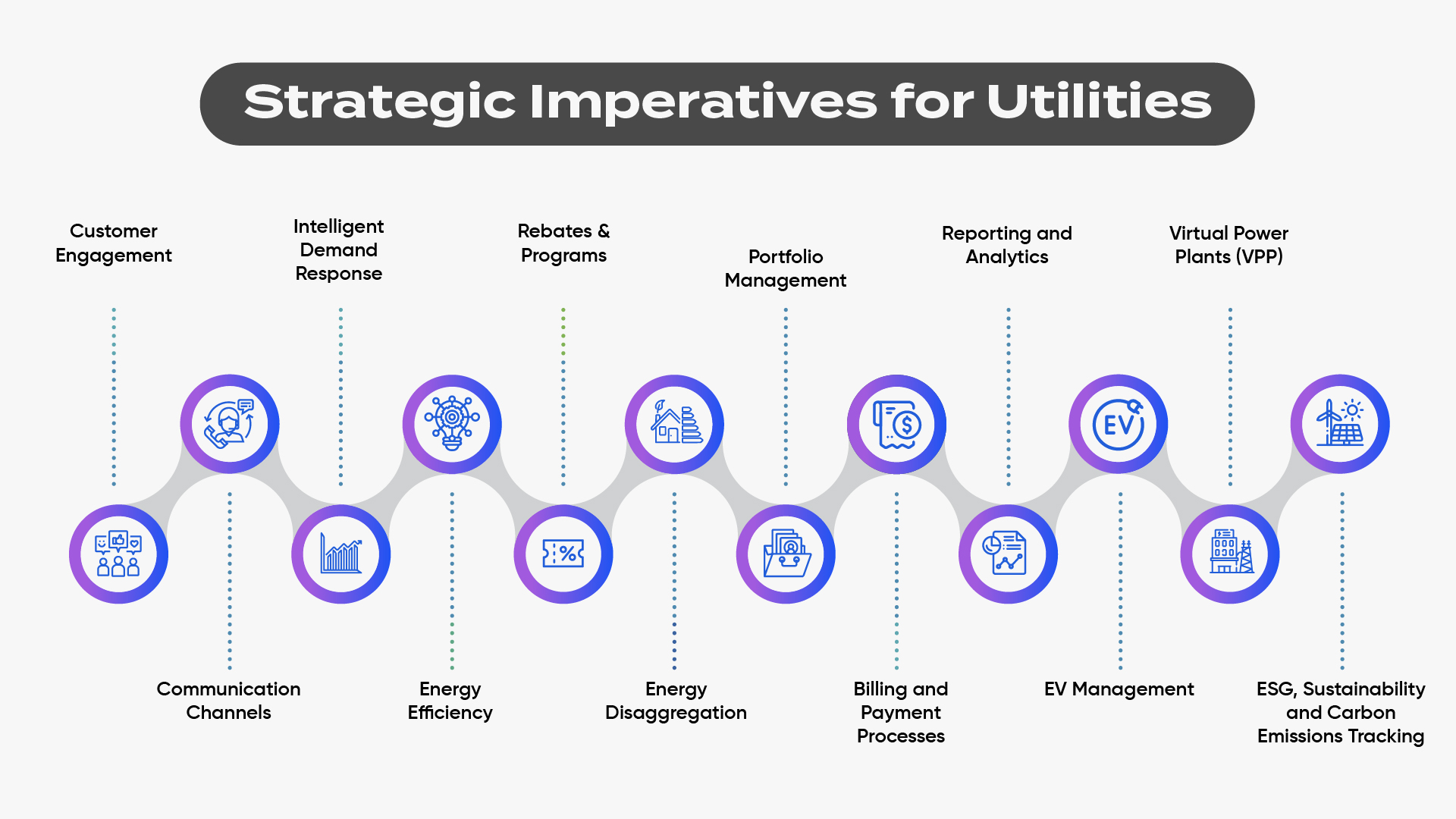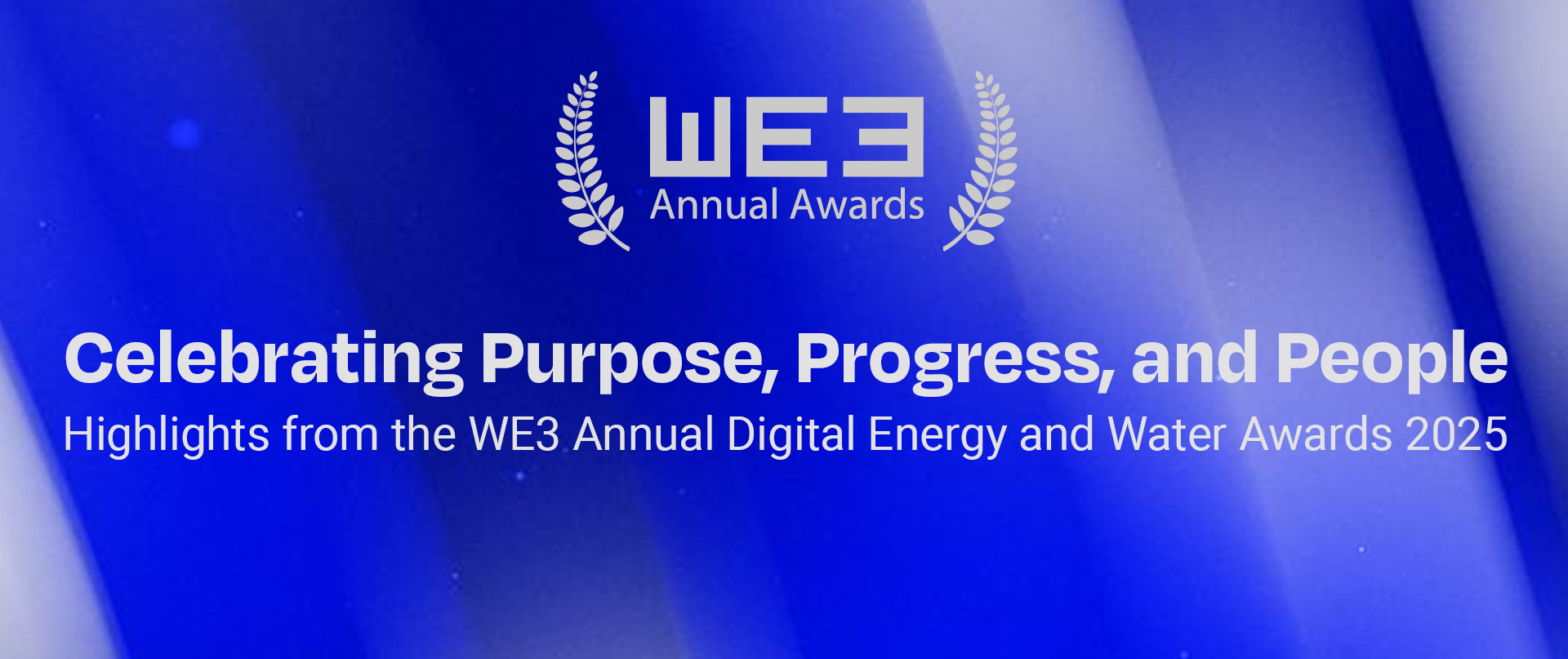Master Blog
Building a Sustainable Energy Future:
How Commercial and Industrial Customers and Utilities Can Lead the Way

The commercial and industrial (C&I) sector stands tall as the driving force behind a staggering 40% of the world's energy consumption. This sector isn't just a participant; it's a powerhouse, fueling everything from manufacturing giants to bustling office complexes and high-tech laboratories.
Imagine the scale: every factory floor, every construction site, and every bustling hotel lobby contributing to this massive energy footprint.
In the United States, for example, industries alone consume approximately one-third of the nation's energy supply, underscoring their pivotal role in shaping energy demand.
As this sector continues to innovate and expand, its hunger for energy grows, necessitating smart technology solutions and sustainable practices to meet future demands responsibly. And this isn't just about numbers—it's about the industry’s transformative impact on global energy landscapes, driving the world towards a future where efficiency, innovation, and sustainability go hand in hand.
Understanding the Unique Needs of Commercial and Industrial Customers
Commercial and industrial (C&I) customers in the utilities sector have distinct needs that differentiate them from other consumer segments. These customers typically encompass a broad range of businesses, industries, and institutions, each with specific requirements related to energy usage, reliability, and cost-efficiency. Understanding their unique needs is crucial for utilities to serve this large and diverse segment effectively.
C&I customers consume significant amounts of energy, necessitating cost-effective and reliable solutions. They face challenges such as fluctuating energy prices, grid instability, and the transition to renewable energy sources. Meeting these challenges requires innovative approaches and strategic partnerships with utilities.
Finding The Right Solution
C&I customers face the formidable challenge of managing energy costs and operational expenses in the face of fluctuating prices and demand charges. Optimizing energy use is vital for improving efficiency and meeting sustainability goals. However, they have to deal with power outages, grid instability, high upfront costs and the intermittency of renewable energy sources.
Implementing advanced technologies like energy monitoring, demand response, and smart controls can be complex. On top of that, they have to navigate intricate billing structures and address privacy concerns. Effective communication is crucial, as relying on outdated channels can delay important notifications.
Achieving sustainability and efficiency requires strategic planning and innovative solutions, making it a multifaceted challenge for C&I customers and a decisive opportunity for utilities.
Strategic Imperatives for Utilities
It becomes essential for utilities to cater to the unique needs of C&I customers, adopt a multifaceted approach in providing integrated solutions and promote and support ESG and Net Zero goals. Utilities can enhance customer satisfaction, drive sustainable practices, and contribute significantly to global environmental objectives by prioritizing these initiatives.

- Customer Engagement- Utilities must prioritize customer satisfaction by offering personalized energy solutions, proactive support, and easy-to-use digital platforms for managing accounts and services.
- Communication Channels- Implement robust multiple communication channels that deliver timely updates, outage notifications, and energy-saving recommendations to C&I customers, enhancing operational reliability and customer satisfaction.
- Intelligent Demand Response- Develop sustainable demand response programs that incentivize C&I customers to adjust energy usage during peak periods, reducing overall demand and mitigating grid strain.
- Energy Efficiency- Actively promote energy efficiency initiatives such as energy-saving programs and equipment upgrades to help C&I customers reduce consumption, lower costs, and enhance operational efficiency.
- Rebates and Programs- Revamp rebate programs to offer competitive incentives for investments in energy-efficient technologies and renewable energy installations, encouraging adoption and supporting long-term sustainability goals.
- Energy Disaggregation- Utilize advanced analytics and energy disaggregation techniques to provide C&I customers with detailed insights into energy usage patterns, enabling informed decision-making and targeted efficiency improvements.
- Portfolio Management- Offer a comprehensive portfolio of energy products and services tailored to meet the unique needs of the enterprise customers, including flexible pricing plans, renewable energy options, and energy efficiency programs.
- Billing and Payment Processes- Streamline billing processes to provide clear, transparent invoices that detail energy usage and costs, enabling better financial planning and budget management for C&I customers, along with multiple payment methods and automated payment features to improve convenience
- Reporting and Analytics- Deliver comprehensive energy usage reports and analytics that highlight performance metrics, sustainability achievements, and cost-saving opportunities, empowering C&I customers to track progress and make data-driven decisions
- EV Management- Develop integrated solutions that intelligently manage electric vehicle (EV) charging schedules with demand management strategies, optimizing energy use and reducing operational costs for businesses.
- Virtual Power Plants (VPP)- Establish VPPs to aggregate and optimize distributed energy resources (DERs) across C&I customer sites, enhancing grid stability, supporting energy resilience, and maximizing operational efficiency.
- ESG, Sustainability and Carbon Emissions Tracking- Assist C&I customers in aligning with Environmental, Social, and Governance (ESG) principles through tailored energy solutions that reduce carbon emissions, enhance sustainability reporting, and meet regulatory requirements.
The Power of AI and Connected Platforms
Implementing AI-Powered, Connected Customer Experience platforms can provide C&I customers with significant value and scalability by enhancing efficiency, reducing costs, and supporting sustainability goals. Some critical AI-focused use cases include:
- Predictive Analytics: By analyzing historical energy usage data, AI can predict future consumption patterns, helping businesses optimize energy use and reduce waste. This proactive approach can lead to significant cost savings and enhanced operational efficiency.
- Automated Energy Management Systems: AI-driven systems can automatically adjust heating, cooling, and lighting based on real-time data and occupancy patterns. This ensures energy is used efficiently, reducing unnecessary consumption and lowering utility bills.
- Process Optimization: AI can enhance industrial processes by analyzing operational data, leading to more efficient operations and reduced energy consumption. This translates to lower operational costs and a smaller carbon footprint.
- Dynamic Load Balancing: AI can dynamically balance electrical loads throughout the day, minimizing peak demand charges and reducing strain on the grid. This helps manage costs and maintain grid stability.
- Energy Forecasting: AI can predict the output of renewable energy sources such as solar and wind. This helps optimize their integration into the energy mix, ensuring a reliable and sustainable energy supply.
- EV Fleet Management: AI can efficiently manage the charging schedules of electric vehicle (EV) fleets, ensuring optimal energy use and reduced costs. This promotes sustainable transportation solutions while keeping energy expenses in check.
Utilities and C&I Customers Leading the Pathway to Sustainability
C&I customers and utilities can forge dynamic partnerships to build a sustainable future by leveraging innovative technologies and shared goals. By collaborating on energy efficiency programs, demand response initiatives, and integrating renewable energy sources, they can optimize energy usage and reduce carbon footprints.
AI-driven solutions enhance these efforts, enabling predictive maintenance, smart grid management, and real-time energy monitoring. Together, they can advocate for favorable policies, invest in sustainable infrastructure, and engage communities, ensuring a resilient and eco-friendly energy landscape that benefits businesses and society.
At SEW, our commitment to Engage, Empower, Educate people to save energy and water, embodies a holistic approach that fosters energy efficiency, advocates for ESG and Net Zero Goals, and envisions a cleaner, safer, smarter energy future. Our AI-Powered SmartCX platform tailored for Commercial and Industrial (C&I) customers, is equipped with essential tools to meet their unique needs. This comprehensive platform offers self-service capabilities, personalized energy assistance and customized rate plans. It focuses on enhancing energy efficiency, optimizing peak demand management, and facilitating participation in intelligent demand response programs. The vertical-specific platform also provides strategies for energy procurement and pricing, along with educational resources to empower informed decision-making for this customer segment.





